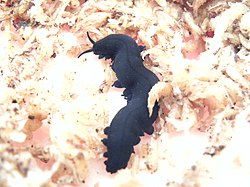Career


Reid is an alumna of Macquarie University, a public research university in Sydney, Australia, where she completed a Bachelor of Science degree in 1984. She completed a Master of Science degree in 1990, with a thesis titled Taxonomic review of the Australian Rossiinae (Cephalopoda : Sepiolidae). [2] She completed a PhD in 1996, with a thesis titled A systematic review of the Peripatopsidae (Onychophora) in Australia. [3]
Reid has an interest in cephalopods, particularly bobtail or bottletail squids (Sepiolidae), cuttlefishes (Sepiidae), and pygmy squids (Idiosepiidae). She has authored two books, [4] and her research has been published in a number of scientific journals, including Invertebrate Taxonomy, Bulletin of Marine Science , Australian Natural History, Zootaxa , and others. [5]
Reid is member of the Australian Marine Sciences Association (AMSA), the Cephalopod International Advisory Council, and Sustainable Population Australia. [1]